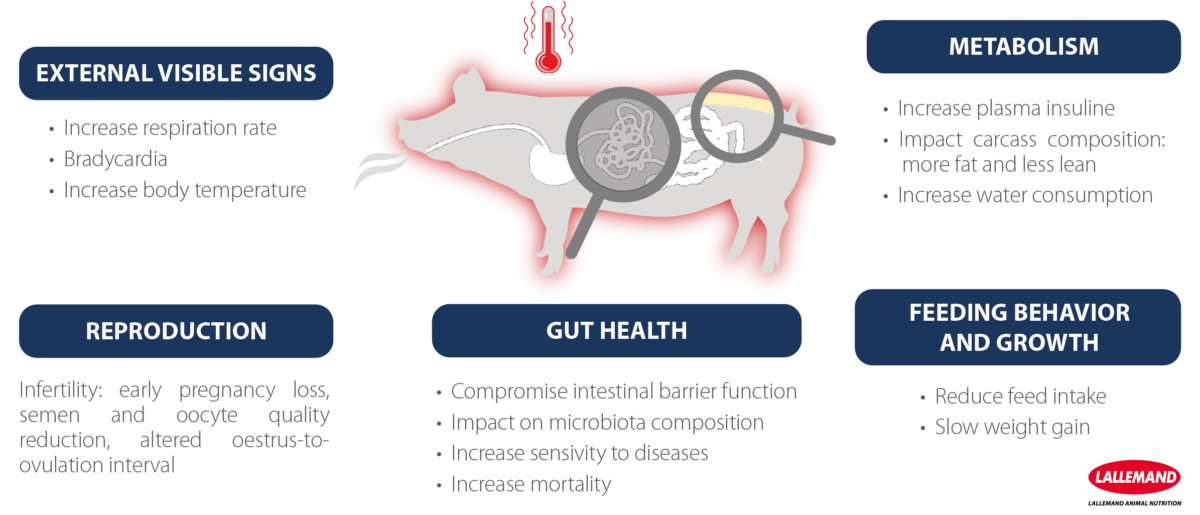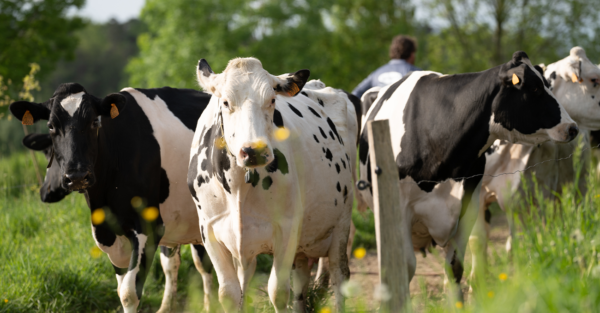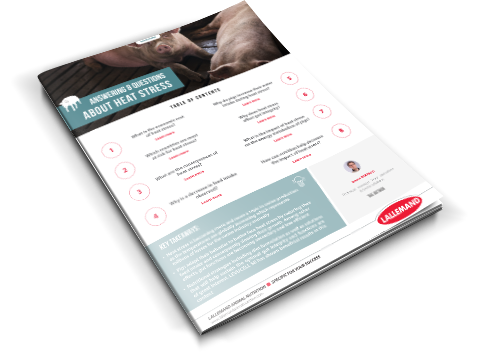Blog | Reading Time 6 minutes
Heat stress in pigs: what are the risks, how to prevent it?
Heat stress is becoming a growing issue in swine production as the temperatures are globally increasing, costing the swine industry millions in losses every year. Pigs adapt their behavior to better face heat stress by reducing their feed intake and consequently slowing down their growth. Among other effects, gut functions are becoming secondary and less efficient.
What is the economic cost of heat stress for pig production?
It is difficult to accurately determine the global economic consequences of heat stress on pig production, especially because heat stress may impact sows, their offspring as well as the growth and the carcass composition of pigs. A study performed by Pollman in 2010 estimated the economic impact of heat stress on sows alone – taking into account only low sow performance – costs the U.S. swine industry $450 million annually (equivalent to over 500M EUR).
Which countries are the most at risk for heat stress for pigs?
Countries that are known to undergo hot summer conditions are at risk for heat stress.
Increasingly, heat stress is also a concern for northern countries – like the Netherlands, Germany, UK, Ireland – and more – which are considered temperate climates. This is not only about temperature, relative humidity should be considered too as it increases heat stress
At what temperature do pigs start to suffer from heat stress?
Sows’ comfort zone is between 18°C and 20°C: this means sows can start suffering from heat stress when the ambient temperature is above 20°C. The impact of heat is exacerbated by the ambient humidity level.
Fattening pigs start suffering from heat stress at an ambient temperature above 20°C, as their comfort zone is between 14°C and 20°C. The main factors driving pig sensitivity to thermal stress are the pigs’ weight and genetics. Modern pig genotypes produce considerably more heat than their predecessors. The more productive an animal is, the more heat they produce and the less tolerant they are to external heat. Fattening pigs are more sensitive to heat stress than lighter piglets.
What are the consequences of heat stress on pigs?
Physiologically, pigs are less tolerant to heat stress than other livestock animals. In pigs, one of the first visible signs of heat stress is a reduction in feed intake. Reducing nutrient intake during thermal pressure is a way the animal can reduce its own metabolic heat production from the digestion process.
Le Dividich et al. (1998) reported the decrease can be estimated at between 40 to 80g/°C/day, which is correlated with factors like breed, body weight range, and diet.
The higher the temperature, the lower the feed intake will be. When exposed to heat, the ingestion time per day is reduced as well as the time per day spent in front of the feeding station.
In addition to reducing feed intake, heat stress also impacts carcass composition, can modify insulin metabolism, compromises intestinal health – and reduces reproductive success.
Why do pigs eat less during heat stress?
During heat stress, reduced nutrient intake is a way to decrease the production of metabolic heat for the animal. This effect is particularly pronounced in recent years because of genetic selection for growth and carcass traits that have increased pig’s thermal sensitivity.
Why do pigs drink more during heat stress?
Water plays a crucial role in the mechanism of heat exchange for temperature regulation and maintenance of hydric balance. In the case of heat stress, evaporation becomes the most important mechanism to evacuate heat for the pig. Indeed, high ambient temperatures increase water requirements for pigs. For example, when the ambient temperature increases from 20°C to 29°C, the sow’s water intake is multiplied by two, moving from 4 to 8 L/kg of feed intake.
During respiration, water exchanges occur by evaporation from the body to the environment (this is called the latent heat loss route) which helps reduce body temperature. This mechanism depends on the ambient temperature and relative humidity gradient.
The temperature of the water plays also a non-negligible role in the efficacy of the heat exchange mechanism. Supplying water at 15°C instead of 22°C improved the performance of lactating sows and their piglets during heat stress events.
Why does heat stress affect pigs’ gut health?
During heat stress, there is a redirection of the bloodstream to the skin’s surface to maximize the heat exchange by convection, conduction – and radiation (called the sensible heat loss routes). The consequence is vasoconstriction at the gastrointestinal tract level to redirect the blood flow toward peripheral circulation, which affects the integrity of the gut epithelium. The absorption of nutrients is therefore reduced, which also contributes to decreased growth performance and a reduction in feed intake.
How does insulin impact pigs’ response to heat stress?
In pigs, heat stress induces an increase in glucose utilization, particularly for the immune system function. Indeed, immune cells are glucose users when they are stimulated. Thus, heat stress induces a switch in the nutrient partitioning normally used for growth, which results in a reduction of performance.
The activated immune cells become sensitive to insulin while muscle and adipose cells become refractory to insulin during the heat challenge. Hence, the effect of heat stress on fat deposition might be connected to an altered insulin response. Improving the insulin sensitivity of pigs can help mitigate heat stress effects on metabolism and growth performance.
What is the impact of heat stress on pigs’ microbiota?
The gut microbiota is strongly connected with the central nervous system and behavior by playing important physiological functions, called the gut microbiota-brain axis. Among other implications, the microbiota is involved in thermal heat acclimatization, and the fecal microbiota of growing pigs is affected by heat stress.
For instance, scientists have shown a relationship between gut microbiota composition and the pig’s capacity to adapt to heat stress. In a recent study, under heat stress, higher levels of beneficial species such as Ruminococcus Bromii and Lactococcus Lactis, were positively correlated with better dry matter intake and energy retention when the diet was supplemented with live yeast Saccharomyces cerevisiae boulardii CNCM I-1079. This may explain the higher energy retention observed in this situation and the potential of microbiota modulation strategies such as probiotic supplementation.
How can nutritional strategies help manage heat stress in pigs?
The feed plays a non-negligible role in the regulation of heat produced at the metabolic level. The Thermic Effect of Feeding (TEF) is a measure of how much the feed increases energy expenditure – expressed as heat – due to the energy required to digest, absorb, and metabolize the nutrients.
For instance, reducing the level of protein in the diet reduces the negative impact of heat stress.
Formulating diets with an increased level of dietary fat and reduced levels of dietary protein and dietary fiber contributes to lower the thermic effect of feeding.
In conclusion, pig health and performance are increasingly impacted by heat stress and gut health, its microbiota, and nutrition play an important role in pigs’ ability to cope with this issue.
Published Jul 17, 2023 | Updated Sep 18, 2023
Related articles
Need specific information?
Talk to an expert



